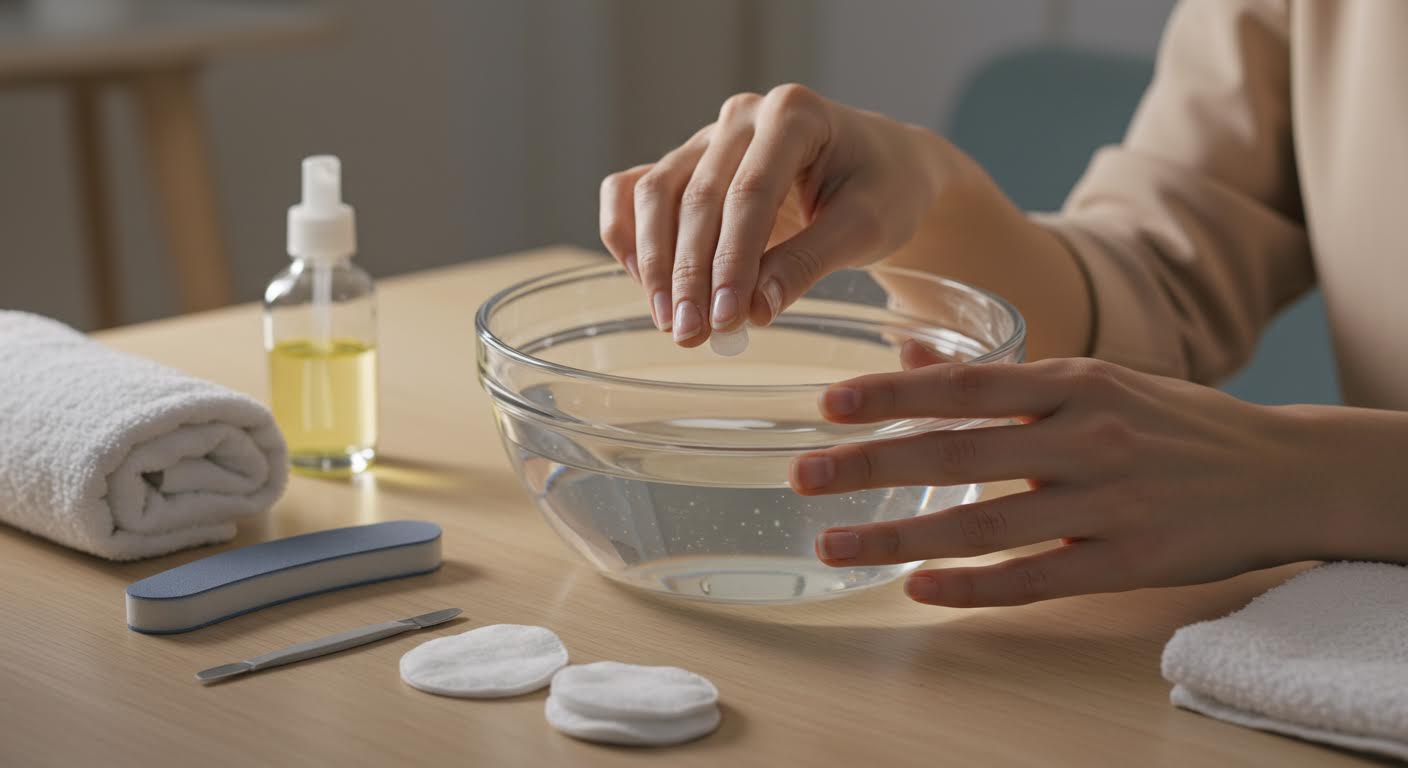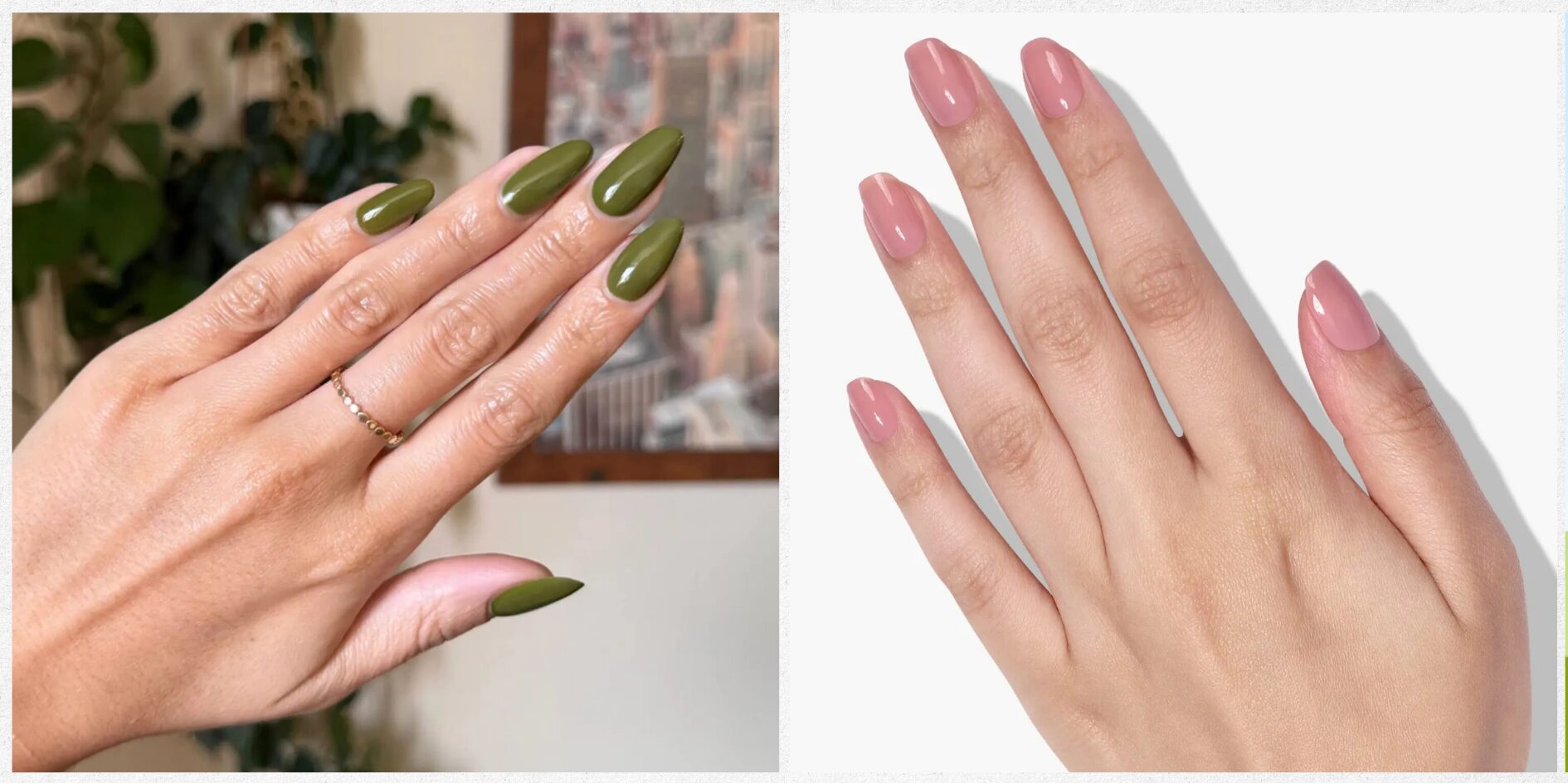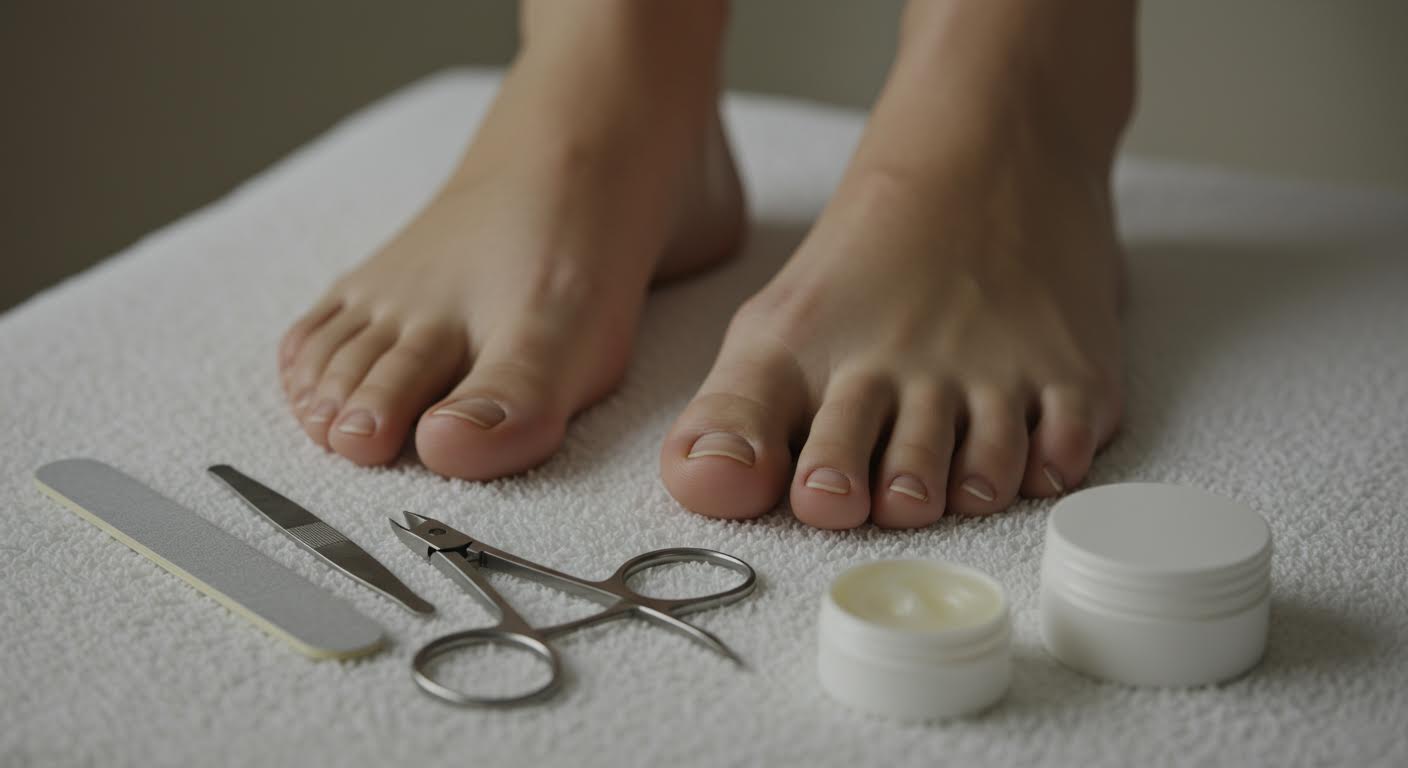How to Safely Remove Acrylic Nails at Home (Without Damaging Your Real Nails)
Table of Contents
Acrylic nails are undeniably glamorous—they’re durable, stylish, and perfect for showcasing intricate nail art or trendy polish colors. They create a strong surface that makes your hands look instantly more refined.
Yet, many people worry about the damage they can cause when it’s time to take them off. According to nail experts, the real issue isn’t the product—it’s the removal process. When done correctly, your natural nails stay strong, healthy, and beautiful.
Whether you’re tired of your current set or simply want to give your nails a break, knowing how to remove acrylic nails at home safely is essential. Ahead, discover expert-approved techniques for gentle at-home removal — and the mistakes you should avoid at all costs.
1. Begin with the Classic Soak-Off Method
The safest, most reliable way to remove artificial nails is the acetone soak method. Patience is key here.
What You’ll Need
- 100% pure acetone
- A glass or ceramic bowl (avoid plastic)
- Optional: cotton balls and aluminum foil
How to Do It
- Pour acetone into your bowl and soak your fingertips for about 20 minutes, or until the acrylic softens.
- For faster results, wrap each nail with a cotton ball soaked in acetone, then secure with foil.
- For a more eco-friendly method, skip the foil — just soak longer. It’s gentler on the planet.
Avoid: Using rubbing alcohol instead of acetone. Alcohol won’t soften acrylic and can dry out your skin.
Once softened, you’re ready for the next step — the rolling technique.
2. Try the Soak-and-Roll Technique for a Gentler Finish
The soak and roll (or “rolling technique”) offers a cleaner, damage-free removal experience.
You’ll Need
- Coarse nail files (100/180 grit)
- A padded buffer
- Orange wood sticks
- Medium, fine, and coarse files
- A towel and cuticle oil
How to Do It
- Soften the edges of your coarse file to avoid scratching your cuticles.
- File off the surface layer of acrylic. This roughens the texture, allowing acetone to penetrate faster.
- Soak your nails again, covering your hand with a towel to reduce evaporation and help the acetone work faster.
- After 10–15 minutes, use a wood stick to nudge the softened acrylic toward the tip of your nail.
- Never push toward the cuticle, as that can cause slips or small cuts.
- Repeat the process until all acrylic is gone, then smooth your nails with a fine-grit file and apply cuticle oil to rehydrate your skin.
💡 Pro Tip: Don’t clip long acrylics before soaking — they’re bonded tightly to your natural nail, and clipping can cause cracks underneath.
3. Avoid “DIY Hacks” Like Dental Floss
Social media hacks might look tempting, but not all of them are safe. The dental floss acrylic removal hack that went viral on TikTok is one you should absolutely skip.
Using floss to lift your acrylics can cause severe nail plate damage. The floss wedges under the enhancement and lifts it improperly, peeling layers off your natural nail and leaving it thin, brittle, and weak.
Professionals warn that this improper lifting can result in long-lasting damage that may take months to heal. Always rely on gentle soaking techniques instead of “quick fixes.”
4. Skip the E-File — Leave It to the Pros
While e-files (or electric files) are used daily in professional salons, they’re not meant for home use.
Operating these drilling tools requires professional training and precision. The bits, rotation direction, angle, pressure, and RPM speed all matter — one mistake can easily cause nail plate damage or even pain.
If you’re holding an e-file in your non-dominant hand, it’s especially risky. The safest option? Let the professionals handle it. Salons use e-files with care to refine your nails without injury.
Takeaway: Practice safety and caution. If you’re unsure, skip the e-file entirely and use manual files for control.
5. Seek Professional Help if You Don’t Have the Right Tools
Sometimes, DIY acrylic removal just isn’t worth it. Without the correct tools, patience, and technique, you can unintentionally cause damage or weaken your nail bed.
If your nails feel fragile or removal isn’t going smoothly, book an appointment with a licensed technician.
Professionals have the right equipment and expertise to safely remove acrylics while preserving your nails’ well-being and strength. Yes, there’s a cost, but consider it an investment in your nails’ long-term health.
A single salon session can help your nails recover faster, maintain shine, and avoid future breakage.
6. Understanding the Real Risks and Myths
Let’s clear the air: Acrylic nails themselves don’t ruin your nails — improper removal does.
Rushed or quick methods can cause surface tearing and brittleness. Even minor damage can lead to long-term weakness.
If you don’t have the time or money to remove them correctly, experts suggest waiting. When done with care, acrylics are completely safe.
Pros: Durable, beautiful, customizable.
Cons: Risk of damage from poor removal.
By following safe, gentle techniques, you can keep your natural nails healthy while enjoying the color, designs, and strength that acrylics offer.
Key Takeaways
- Always use acetone, not rubbing alcohol.
- The soak-and-roll technique is the gentlest DIY method.
- Avoid floss hacks and e-files unless you’re a pro.
- When in doubt, visit a professional.
- Give your nails a break between sets for recovery.







